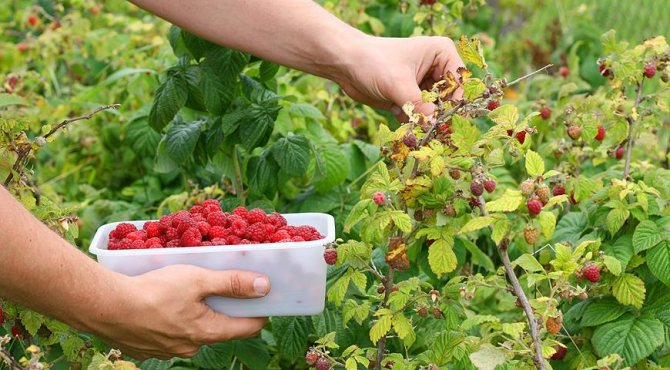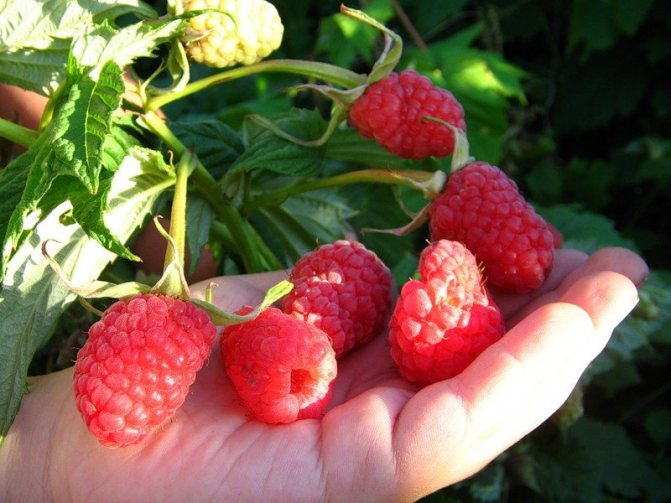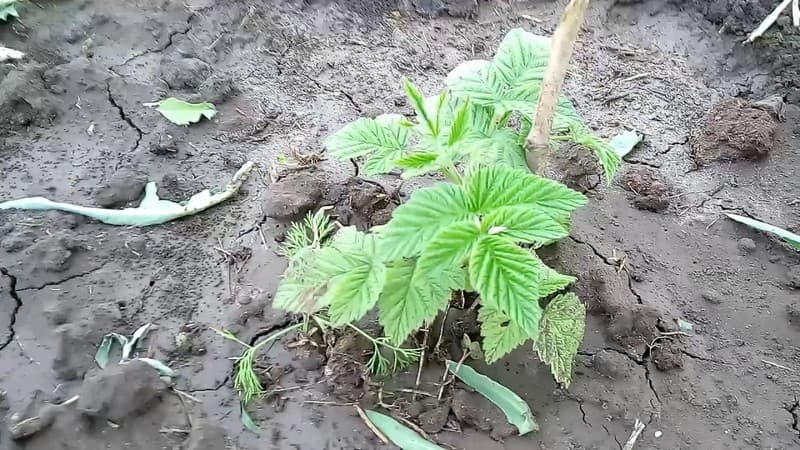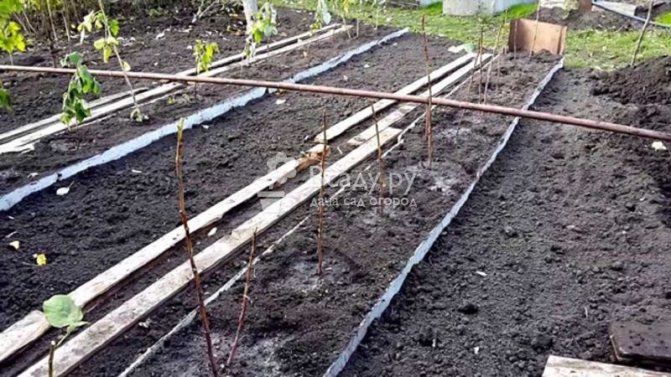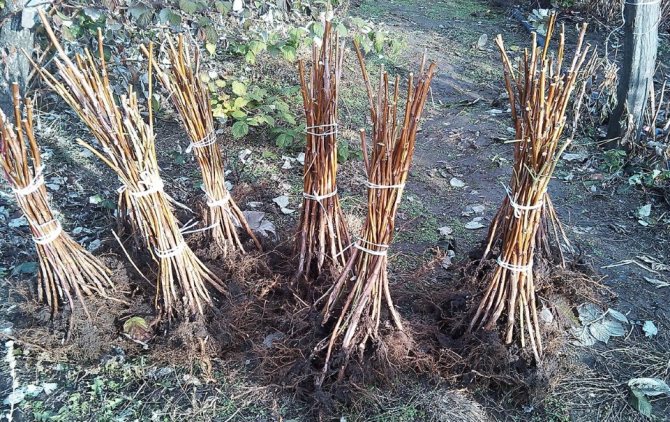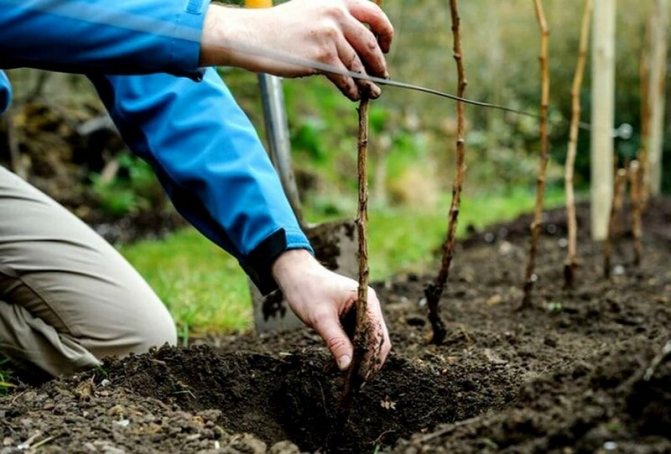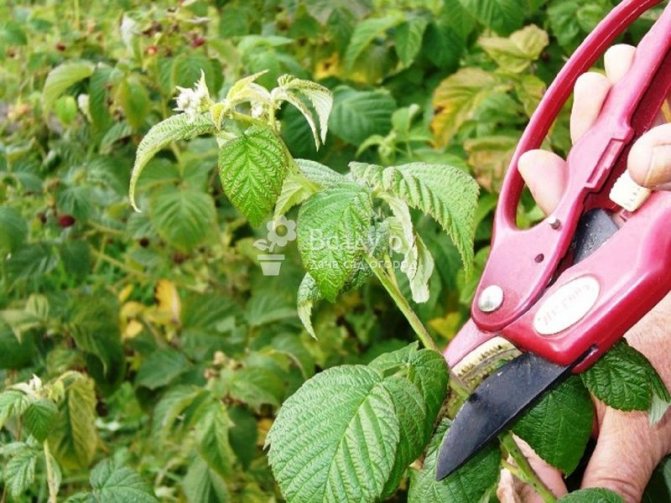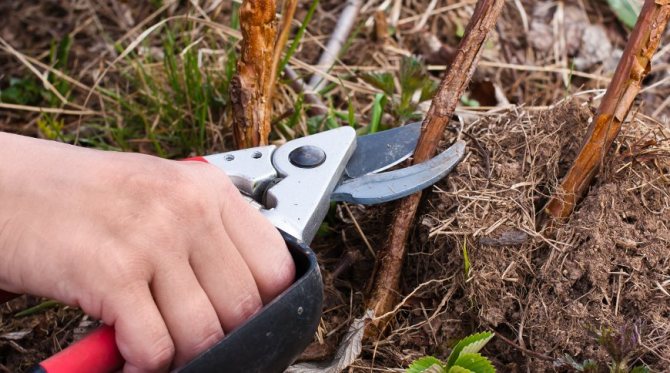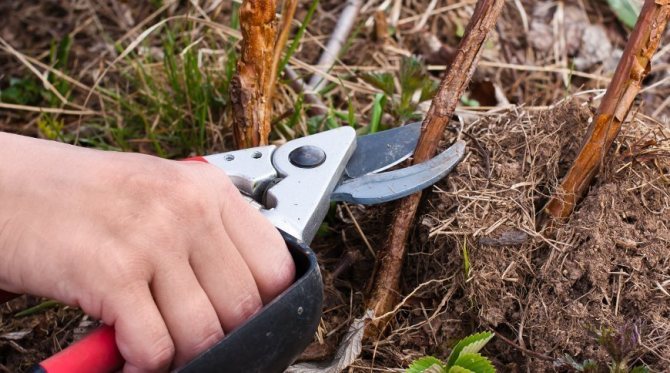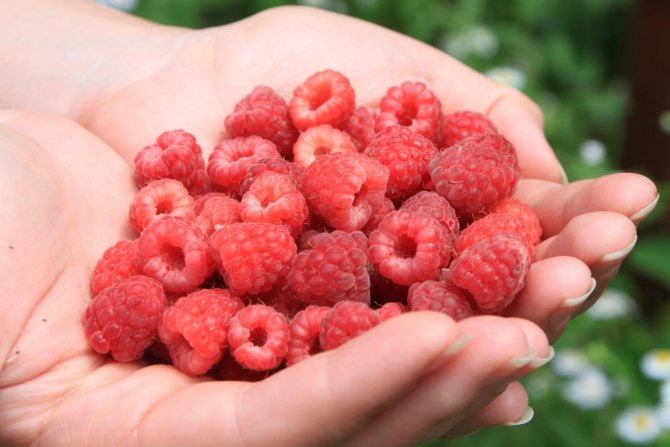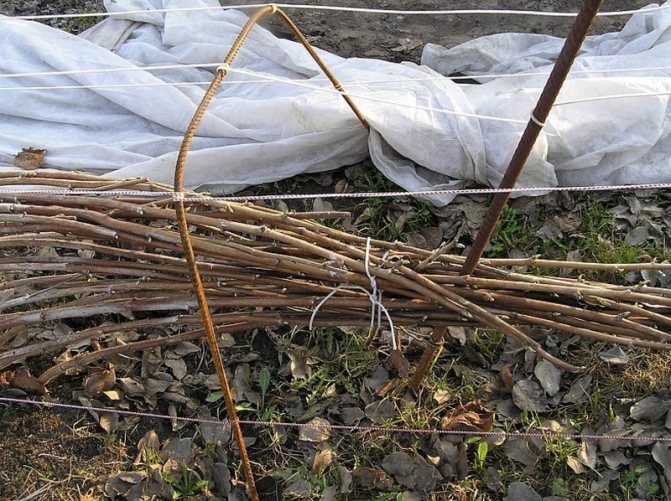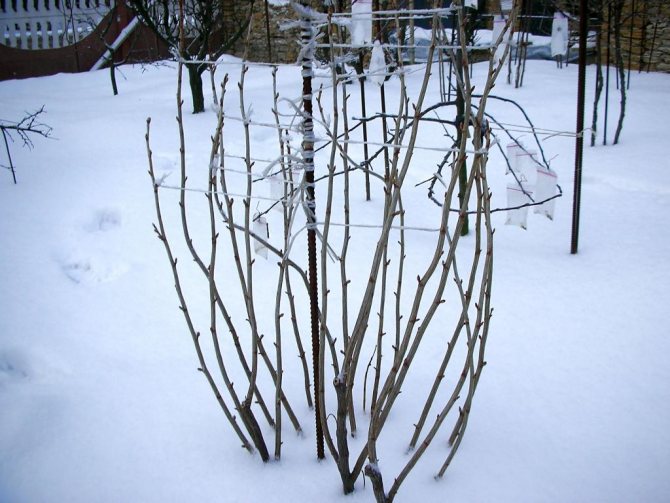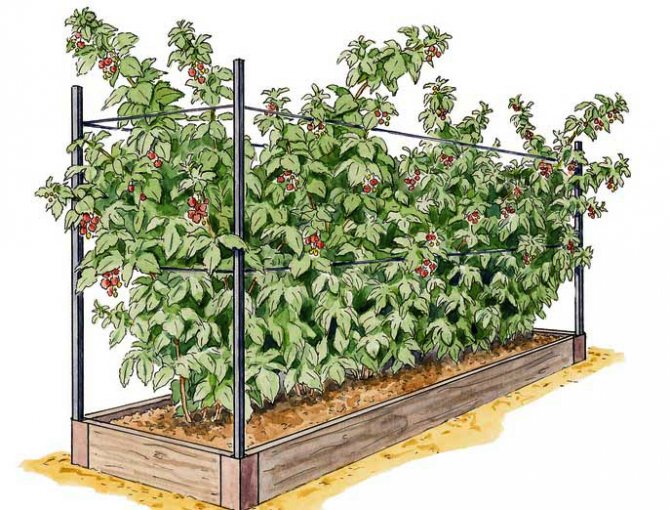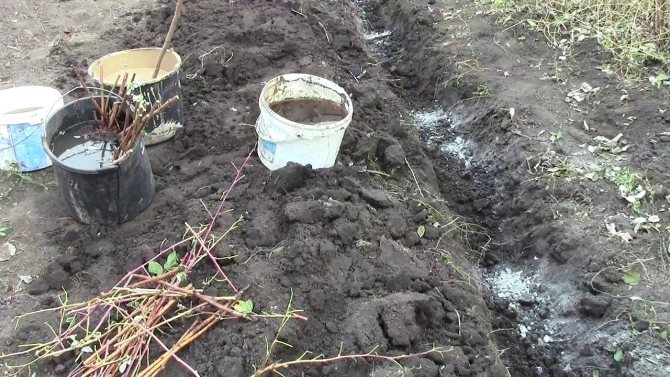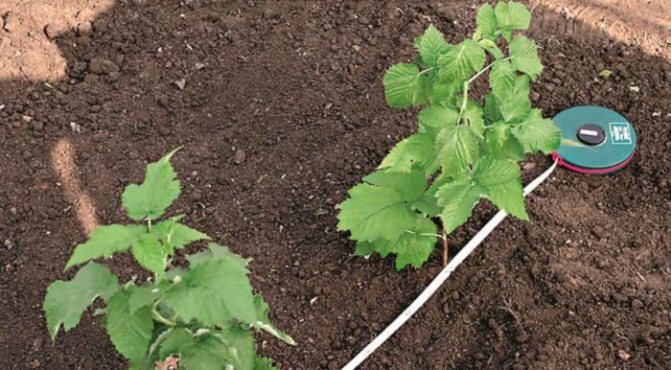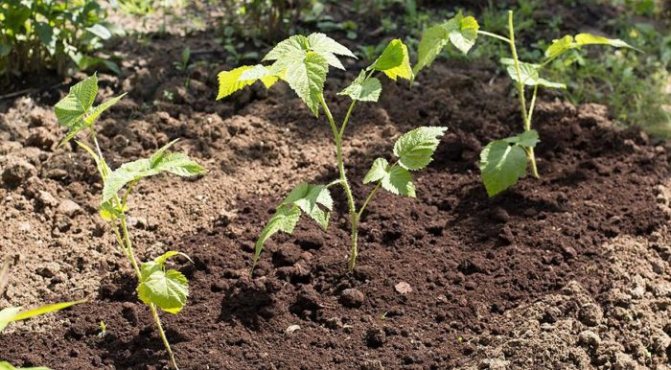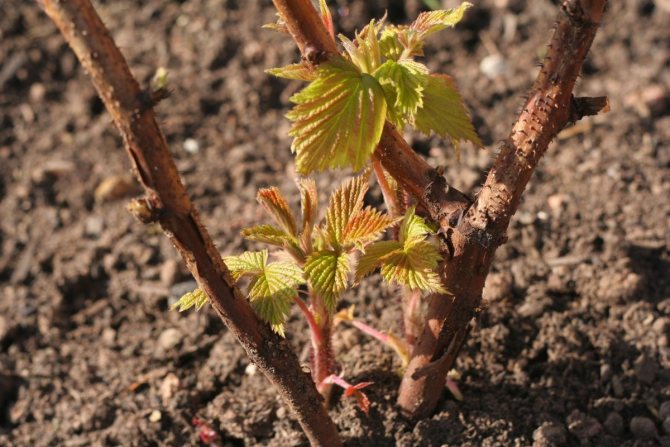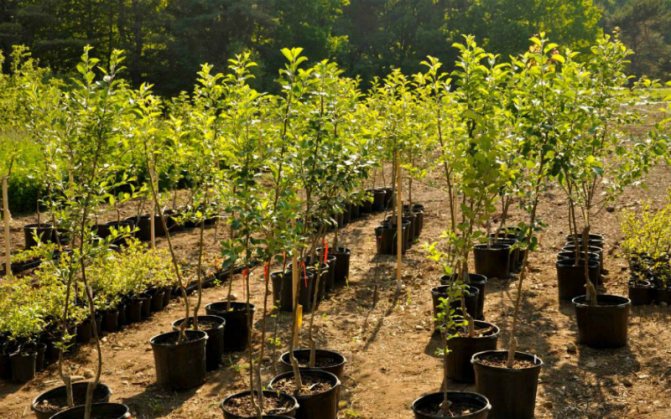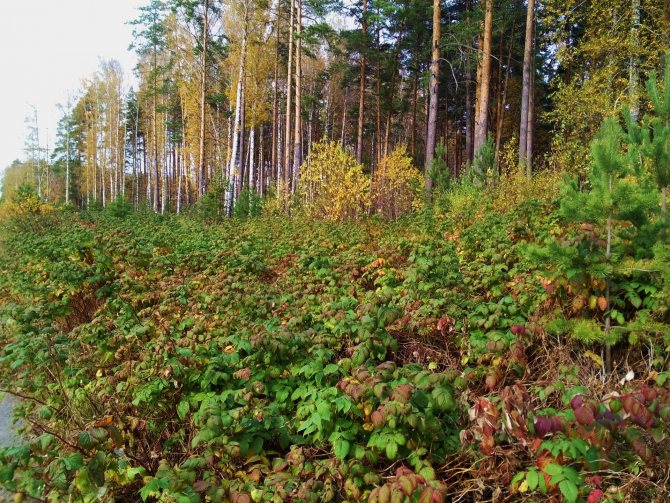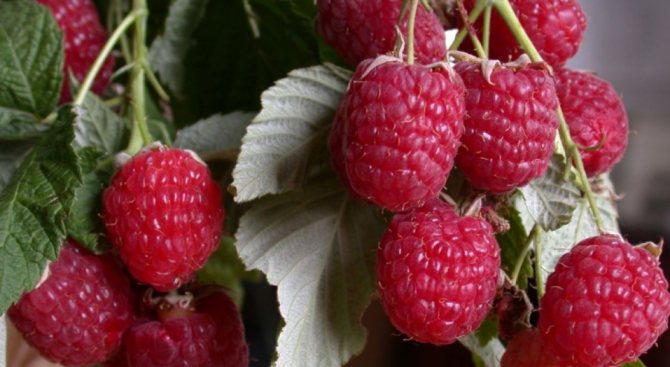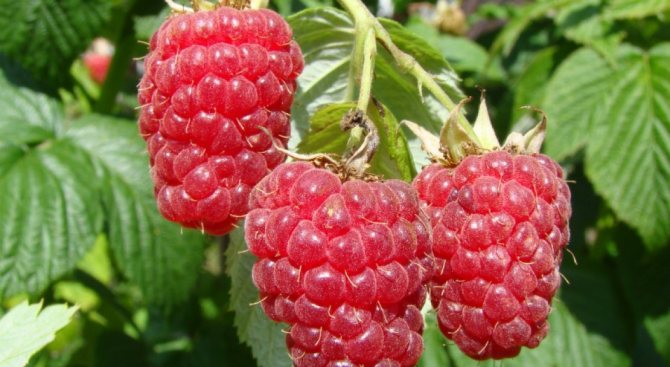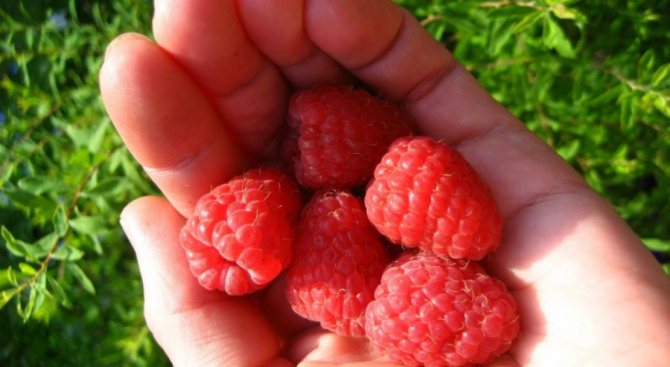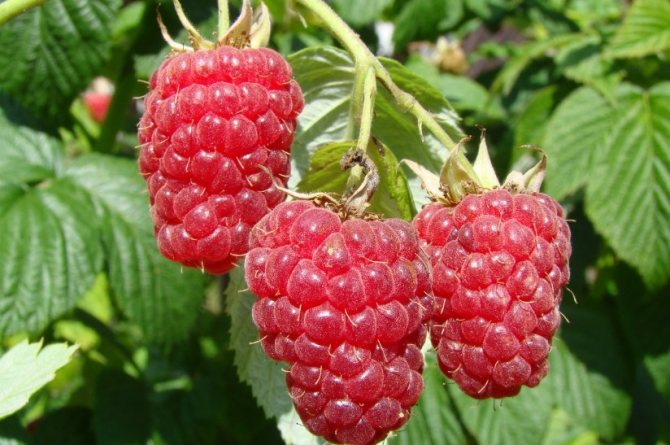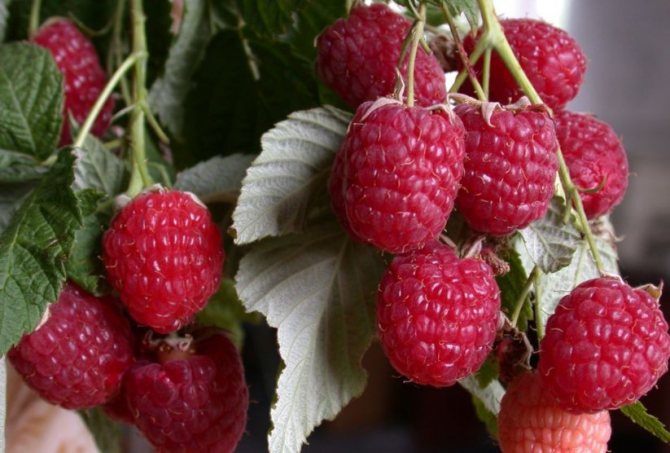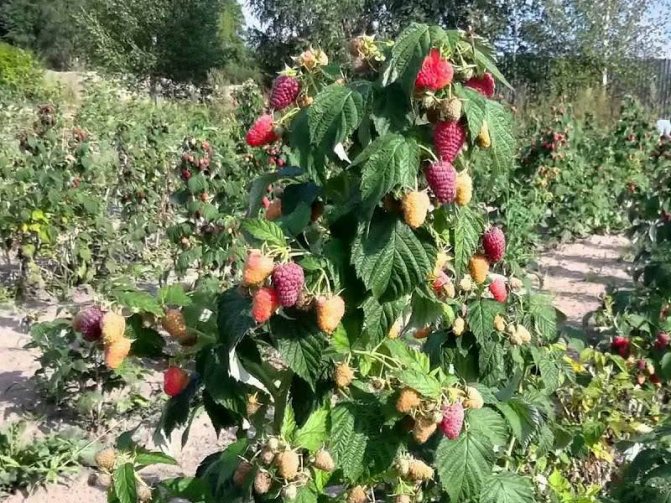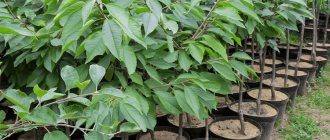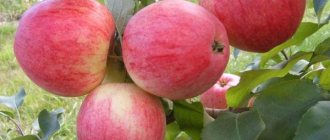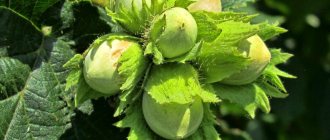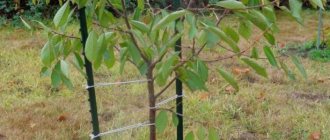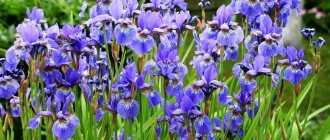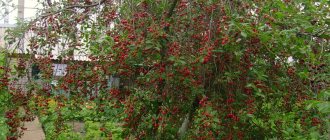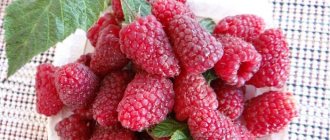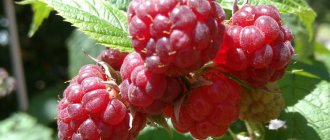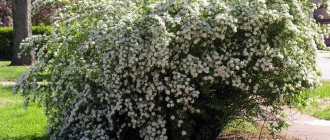Description of raspberry hussar
Raspberry Gusar belongs to the category of the so-called "golden varieties". Its popularity is explained, first of all, by its unpretentiousness. It doesn't take much skill and effort to ensure a good harvest. The variety is suitable for central Russia, as well as southern regions where there is a lack of moisture. The form of the shoots is straight; no garter is required.
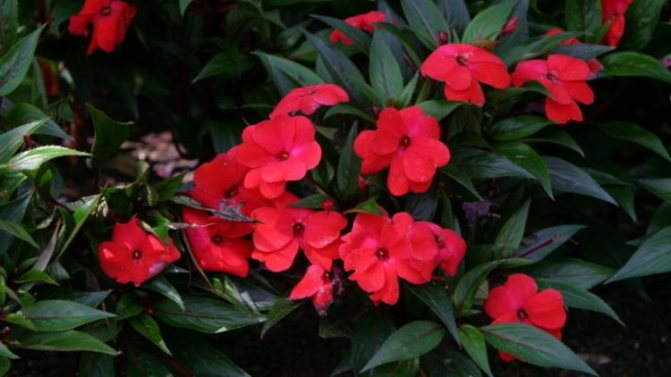
Raspberry Gusar and its distinctive features:
- Raspberries have quite powerful stems that can withstand even strong gusts of wind. When optimal conditions are created, the bush reaches 3 m in height. The berries are large, reaching a mass of 12 g. With good fruitfulness, up to 16 kg of raspberries can be harvested from one bush. The berries are conical in shape. Upon reaching the stage of technical ripeness, they become sweet with a sour taste. Contains vitamins C, K, B6.
- The leaves of the culture are wrinkled, slightly pubescent, dark green in color.
- Fruit twigs are located throughout the shoot area.
- Fruits are conical in shape, scarlet, with ruby overflow. The taste is sweet, with a slight sourness. They are characterized by a strong berry aroma.
- The average weight of berries is 3.2-3.5 g. There are specimens reaching 10-12 g. The sugar content in fruits reaches 10.9%. Vitamin C accounts for approximately 37%. The berries deserve a tasting score of 4.2 points.
- Raspberry Gusar is characterized by resistance to viral and fungal diseases.
- The culture tolerates low temperatures and drought well.
Pros and cons
Raspberry Husar has much more pluses than minuses. Of the positive characteristics of the variety, it should be noted:
- frost-resistant;
- drought-resistant;
- with a powerful sturdy stem;
- no need to tie up;
- early ripening and high yield;
- transportability of berries;
- resistance to viruses and fungi;
- absence of thorns along the main length of the stem.
Of the minuses, it can be noted that a large area is required for planting the Gusar variety. Judging by the reviews of summer residents, it is recommended to install a support for the bushes, it is noticed that the stems over time, under the weight of the berries, bend and require support.
A distinctive feature of this variety is the rare formation of shoots, which complicates reproduction by basal processes.
Planting and growing
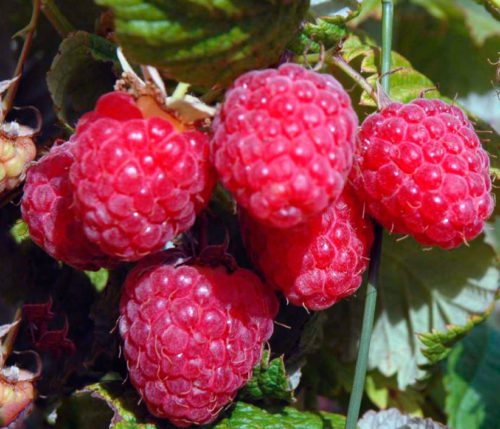

In order for the variety to please with fragrant berries already in the first year of planting, certain nuances must be taken into account.
The crop prefers soils with neutral pH levels. Acidic soils have a negative effect on it. If the bush grows in the shade, this also contributes to a drop in yield. Sunlight is needed to maintain metabolism. Make sure that the landing site is protected from drafts. It is especially important to take care of this in early spring and late autumn.
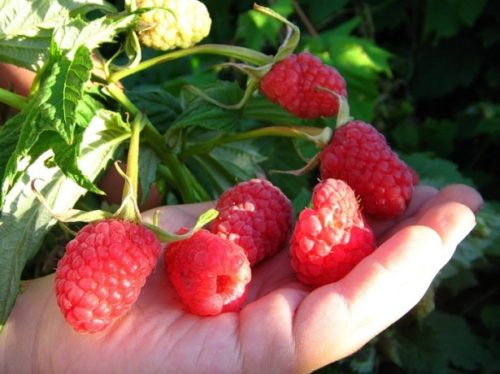

It is advisable to select areas where crops with various types of diseases have not previously grown, since bacteria can persist in the soil for a long time. Raspberries planted in such a place will soon be amazed by them. It is strongly discouraged to plant raspberries where potatoes and carrots used to grow.
Dig a trench or holes ahead of time.It is recommended to do this 4 weeks before planting the seedlings.
There are two ways to grow a plant:
- Trench. Planting of seedlings is carried out in a row, with a ribbon. Trenches with a depth of 15 to 20 cm are equipped. After that, they are filled with water and organic fertilizers are poured. Then the seedlings are planted in the soil.
- Handicraft. The stems are planted in groups of 10, so that in the future they form a kind of bushes. There should be a distance of at least a meter between individual groups of such stems, otherwise it will be difficult to care for them.
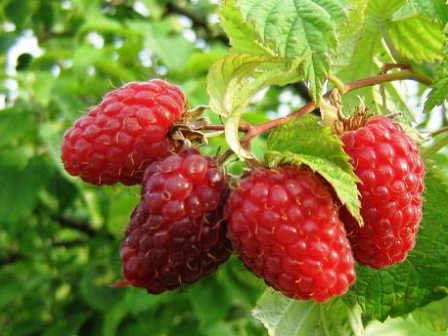

Both the first and the second methods are popular with our gardeners. You can decide for yourself which one is more convenient for you. In any case, there should be enough fertilizer so that the bushes grow upright and their stems remain strong. The optimal supply of nutrients also ensures the good taste of the berries.
Fertilizers are laid in pits and trenches. They are taken with the calculation - 2 kg per stem. After applying to the soil, the trench is covered with soil 5 cm high. This is required to avoid direct contact of the fertilizer with the raspberry roots. If this happens, then they will receive serious damage, especially with a lack of moisture.
Ammonia fertilizers should not be ignored, especially if you are replanting bushes. Ammonium nitrate promotes rapid plant growth and strengthening. It is enough to take 20 g for each bush. It will take relatively little time for the plant to develop new shoots.
Diseases and pests
The Gusar variety is weakly susceptible to pests and diseases. It has a particularly strong immunity against fungal microorganisms. But you can face some difficulties in the growing process.
Typical diseases and methods of treatment - table
| Diseases | Features of the | Symptoms | Control methods |
| Overgrowth | It affects mainly young plants. | The formation of too many new shoots on the bushes, which are collected in one or more bunches. Young stems stop developing early. | Removal and burning of diseased bushes. |
| Curliness | It develops in young shoots that are shortened and take on an irregular shape. | Curling of leaves with edges downward, necrosis of veins, which acquire a bronze color. Sick shoots stop growing. | |
| Green mosaic | It affects leaves that lacked sunlight. | Formation of dark green tubercles on the leaves, bending them down with the edges. | Destruction of diseased bushes. Treatment of the plant with Fitoverm preparations (1 ampoule per 1 liter of liquid) and Agravertin (1 ampoule per 5 liters of water). Consumption - 1 liter per bush. |
| Yellow mosaic | Affects plant leaves. | Yellowing of leaves, curling them around the edges, cessation of crop growth. |
Typical raspberry diseases in the photo
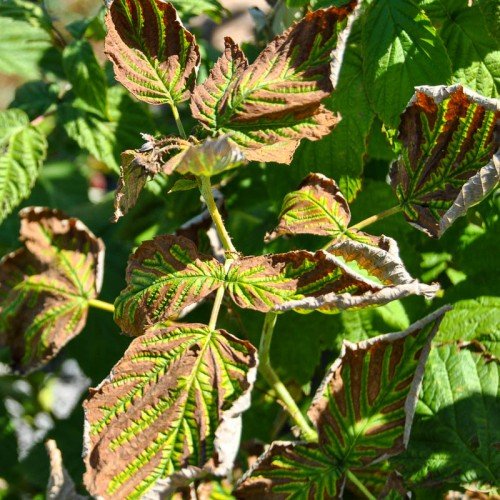

Raspberry leaf curl
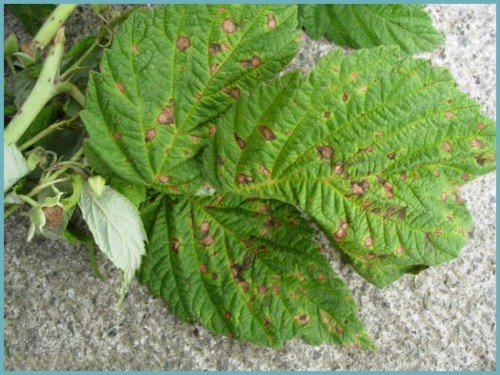

Green mosaic on the leaves
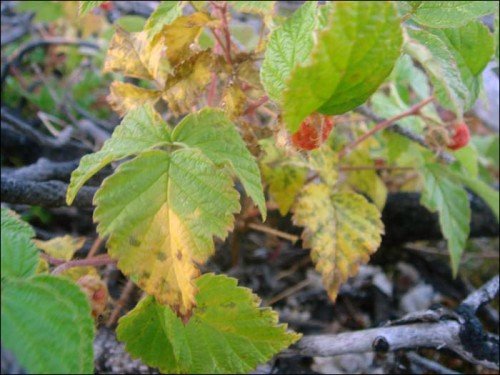

Yellow mosaic
Pests and methods of their elimination
| Pests | Manifestations | Ways to fight |
| Raspberry weevil | Holes in the leaves and flowers that pests eat, drying out of the flowers. | Spraying with Spark preparations (2 ml per 1 l of water) and Confidor (1 ml per 10 l of water). |
| Raspberry beetle | Damage to fruits and leaves. Beetles are capable of destroying a significant part of the crop. | Decis (1 ml per 10 l of water). The composition is used to treat 100 m² of area. |
| Raspberry gnat | The presence of larvae on the bark of the stems. The mosquito affects the cambial layer of the stem, which causes it to dry out. | Digging up the soil. Double spraying with karbofos solution (packing for 8 liters of liquid), consumption of 1.5 liters of composition per bush. |
| Raspberry moth | The presence of larvae on the shoots. As a rule, old raspberry bushes are affected. | Spraying with Decis, Confidor, Spark preparations according to the above method. |
Typical pests in the photo
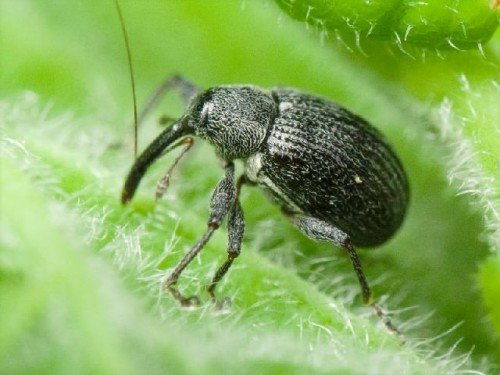

Raspberry weevil
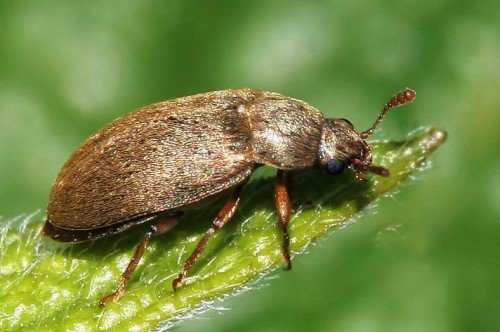

Raspberry beetle
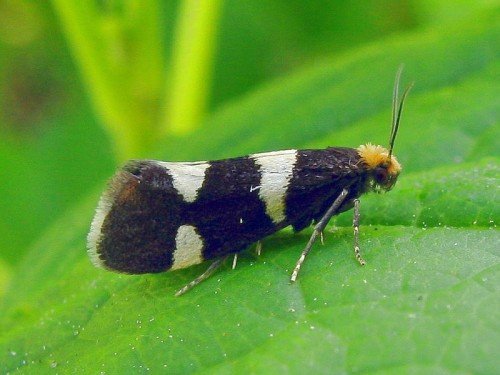

Raspberry moth
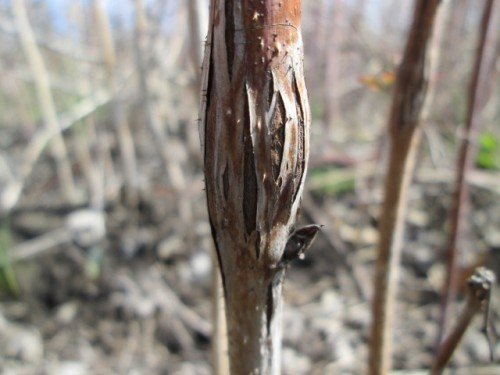

Raspberry mosquito tracks
Raspberry care
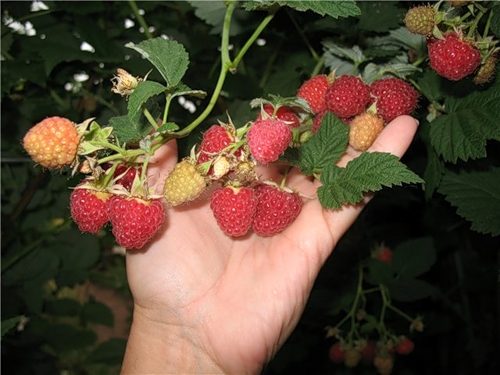

This variety of raspberries requires regular watering, although the crop tolerates drought well. But if you want to get a rich harvest and excellent quality berries, you will have to provide the plant with a comfortable life. However, you should not treat raspberries the way you treat rice, for example, and keep them in water all the time. It is enough not to allow the topsoil to dry out. In the spring and summer months, you can water 2 times a week.
Garter is optional. The stems are durable. On the other hand, during the ripening of the berries, you can make supports so that the quality of the fruit is better, and just for aesthetics. The supports will support the plant as the heavy weight of the crop can put pressure on the stems.
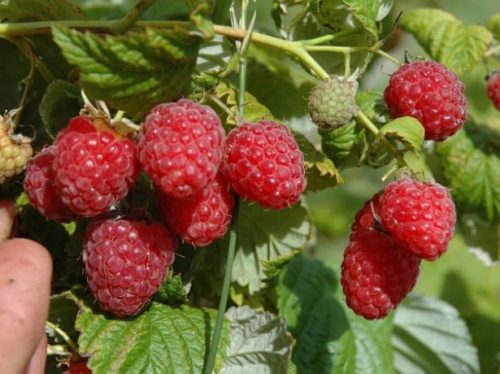

There are several types of garters:
- Fan. Supports are taken, which are hammered to the left and right of the stems. The branches are tied to them at a distance of 5 to 10 cm from one another. As a result, raspberry bushes look like a fan, hence the name.
- Tapestry. The supports are hammered along the entire perimeter, after which the rope is pulled between them. The branches are fixed on them. Outwardly, the bush becomes erect.
Trimming is critical. It improves the yield of the variety and has a beneficial effect on the appearance of the entire garden. Raspberry pruning should be started after picking the berries and at the end of winter. In the first case, it is enough to remove 30 cm, as well as cut out all non-fruiting branches.
With the onset of spring, you should remove all unnecessary shoots that make the bush too thick. Fruiting shoots can be cut at 20 cm above the ground. But even by overly shortening the shoots, you should not be afraid of the consequences. Raspberries grow quite quickly, and the low stem height will be compensated by the appearance of side branches and an increase in fruitfulness.
Landing features
Raspberries are planted mainly in early spring (before the appearance of buds) or in autumn - after September 10 and until mid-October. Some gardeners perform this procedure in the summer (in the first decade of June). But experts are of the opinion that the best time to plant is autumn. During this period, raspberries adapt well to the onset of frost.
It is also important to consider such subtleties regarding the Gusar variety:
- For planting, annual shoots are used that do not have damage to the root system.
- Raspberries are undemanding to the growing environment. But in order to achieve maximum yields, you need to select a well-lit place, protected from wind gusts, with neutral soil for planting.
- In shaded areas, thin and weak stems grow. The buds will not fully develop, as a result of which a small number of fruits are formed.
- It is desirable that the site has a flat surface, but the use of an area with a slight slope is allowed.
- Soil acidity has a negative impact on yield. Therefore, raspberries are planted in neutral soils. The acidity level is allowed in the range of 5.6-6 units.
- For shrubs, waterlogging is extremely undesirable, so the level of groundwater should also be taken into account. The maximum allowable distance between them and the soil surface is 1.5 m.
Some gardeners tie up the shrub, although this is not necessary in the case of the Hussar raspberry. The variety has fairly strong stems. But the garter helps to achieve more aesthetics and keep the berries clean. Indeed, under the load of a bountiful harvest, the stems can tilt to the ground.
Raspberries are tied up in two ways:
- With the fan method, supports are installed on both sides of the bush (you can use ordinary sticks for this). Further, branches are tied to them, placing them every 5-10 cm from each other. Outwardly, such a bush resembles a fan.
- The next way is tapestry. Supports are hammered along the perimeter, boards are nailed between them or a rope is pulled.The stems are tied to this design.
Step by step process
There are two ways to plant raspberries:
- trench;
- handicraft.
Trench method
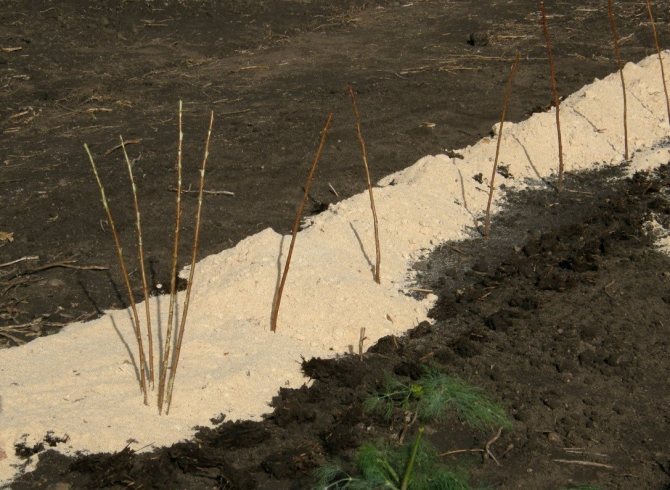

Trench landing method
To plant raspberries in the first way, you need to do the following manipulations:
- Prepare a trench 20–25 cm deep and 50 cm wide. A distance of 1 m must be observed between rows, 40 cm between plants.
- The bottom of the trench is filled with water at the rate of 10 liters of water for 2-3 bushes.
- Then a 15 cm layer of organic mixture is poured. It can be compost or rotted manure.
- The fertilizer is sprinkled with a 5–6 cm layer of soil. This will help prevent direct contact between the root system and the fertilizer in order to avoid scalding the plant.
- Then seedlings are placed in the ground, observing the appropriate distance between the bushes. The root collar is not completely buried; it is necessary to leave 2–3 cm above the ground level. The seedlings are covered with earth or sand and tamped a little.
Important! When planting, fertilizers containing nitrogen should not be added, as this will impair the rooting process of raspberries.
Handicraft method
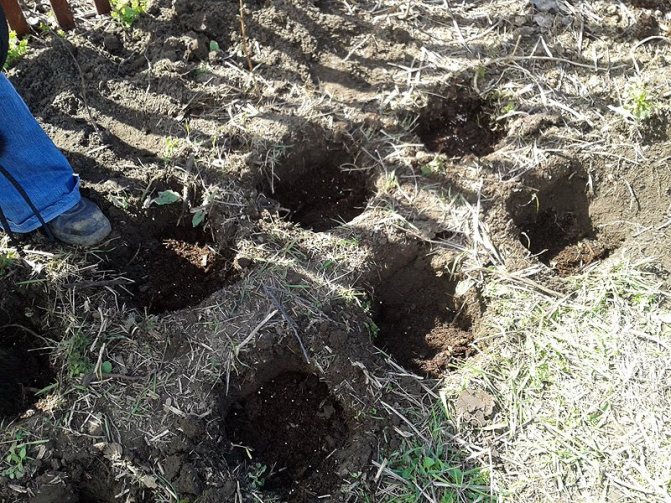

Artisanal method of planting raspberries
With an artisanal method, the actions are performed as follows:
- First, they dig holes 40x50 cm in size.The distance between the rows should be 2 m, between the plants - 1 m.
- The wells are filled with water (the volume of the liquid is calculated in the same way as with the trench method).
- The amount of nutrient mixture should be 2 kg per 1 seedling.
- The seedlings are buried in the soil, leaving the root collar 2 cm open, then fall asleep.
- After planting, the stems are cut at a level of 30 cm from the ground.
Tricks in planting raspberries - video
Reviews about raspberry Gusar
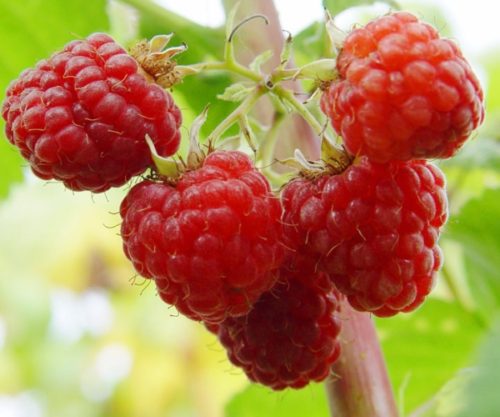

Olga: “I liked Gusar both for its taste and for the size of the berries. I planted it for the first time last year, while it is difficult to talk about the yield. The seedlings reached a height of 1.6 m. It is noteworthy that even in the absence of berries, the stems began to tilt. Next year I will be equipping trellises. "
Sergey: “I tried different varieties, Hussar turned out to be the strongest. The bush has grown up to 2.5 m. But I have already pinched it from 1.5 m several times. I think that it must be tied up, although its stems are quite strong. "
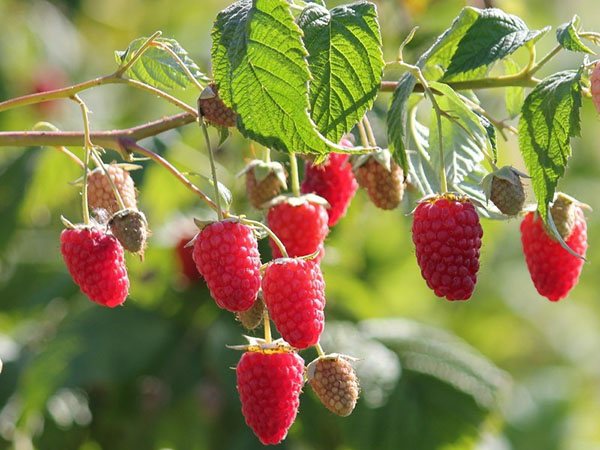

Among the many species, the Gusar raspberry has a special place. It belongs to the group of so-called "golden grades". The plant differs not only in abundant fruiting, but also in unpretentiousness.
Raspberry varieties Gusar: description of the species
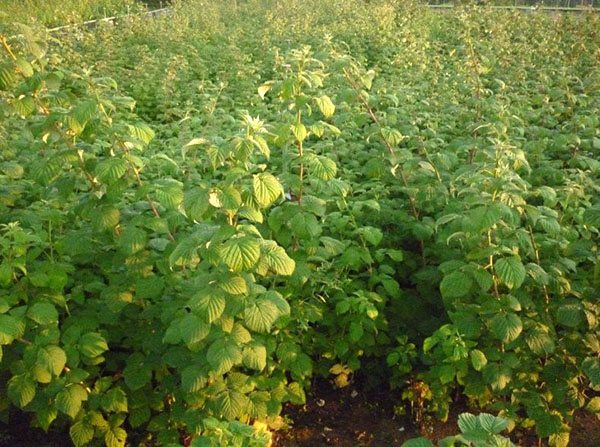

This variety is bred for cultivation in both northern and southern regions. The plant perfectly tolerates severe frosts and dry summers. Such a raspberry is distinguished by a high yield. With proper care, an adult bush reaches 2.7 m in height. Shoots are long, abundantly covered with medium-sized leaves. The plates are deep green with many cuts. Bushes are strong and fairly spreading.
The advantages of the Gusar raspberry variety:
As for the root suckers, up to 10 such shoots can grow from one bush. The berries are medium in size and have a red tint. The fruits are juicy and very aromatic. They all have an elongated shape. Up to 6.5 kg of berries can be harvested from one bush. The weight of one berry varies within 3.5 g. Gusar belongs to the early ripening varieties.
Harvesting
The first berries of this raspberry variety ripen at the end of June. But the main harvest begins in early July. Hussar's berries do not ripen at the same time, fruiting is extended for 3-4 weeks. As a rule, 3-4 kg of fruits are harvested from one bush. Those intended for transportation are plucked with stalks. You can store them for no more than 3 days. Raspberries Gusar are eaten fresh, frozen, and various preparations are made.
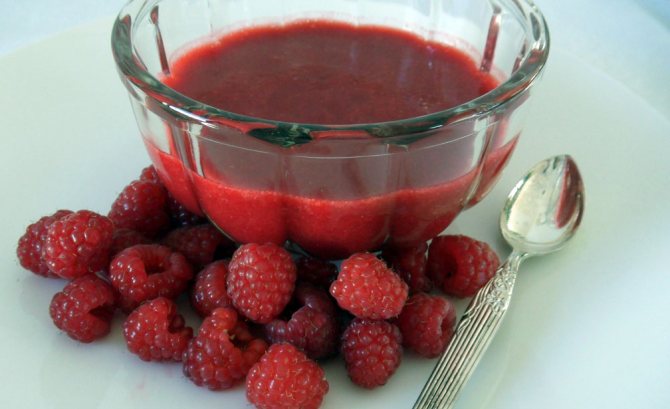

Raspberry Gusar is universal in application
Seedling selection rules
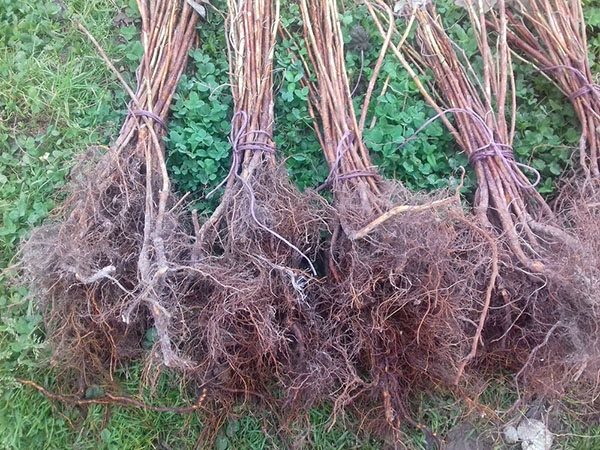

If you want your efforts not to be in vain, then it is necessary, first of all, to choose the planting material correctly. A high-quality seedling should have one shoot no more than 1 cm thick.
Also, special attention will need to be paid to the root system. The length of the roots of a healthy seedling exceeds 15 cm, and the ground part is within 45 cm. High-quality material can be purchased in specialized stores.
Planting raspberries of the Gusar variety
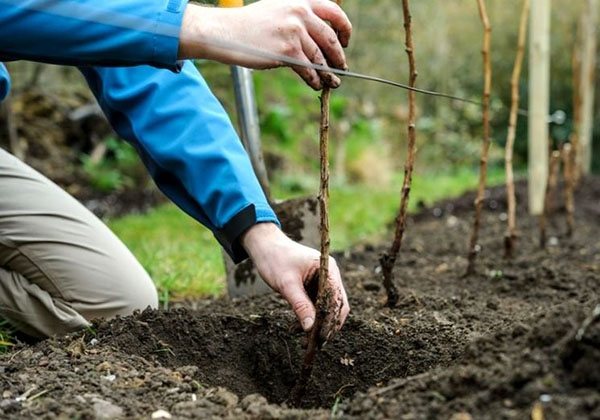

You need to plant raspberries in areas that are well warmed up by the sun. The area should be as flat as possible. Slight inclinations are allowed. At the same time, it is important to ensure that there are no lakes nearby, and the groundwater is as far as possible from the soil surface. This is due to the fact that raspberry Gusar does not tolerate too wet soil.
As for the soil, it should be of medium acidity and light. In areas with a dense substrate that does not allow air and moisture to pass through well, it is not recommended to plant cuttings. In order for the plant to take root well and start giving a bountiful harvest as quickly as possible, planting is carried out in the spring.
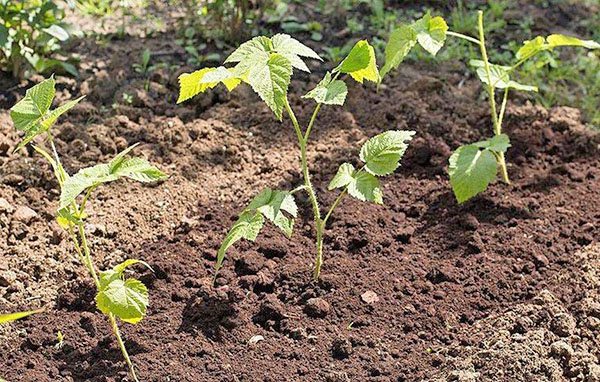

Rules for planting raspberry cuttings:
Cuttings that are planted in the fall in most cases do not take root, as they do not tolerate frost well.
It is not necessary to deepen the seedlings much. This will save the basal buds from decay.
What are the disadvantages of raspberries?
Check out these articles as well
- When pullets start to lay and how many eggs
- How and what to feed ducklings from birth
- Sunflower varieties
- Watermelon variety Sugar baby
When cultivating raspberries Gusar, some difficulties may arise, but in addition, the variety itself has several negative qualities.
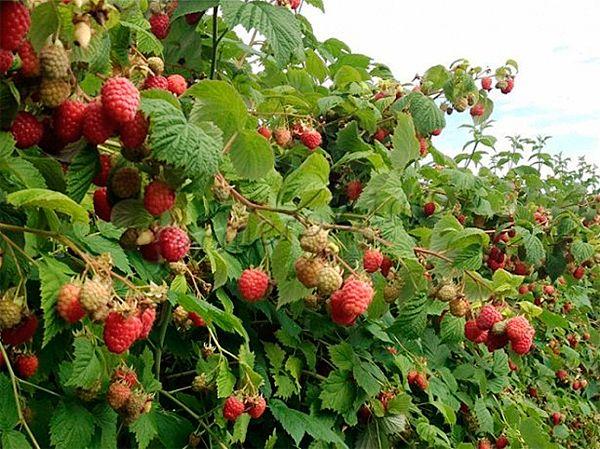

Bushes are tall and powerful, they need a lot of space
- The bushes are tall and powerful - they need a lot of space.
- In the absence of a garter, the process of picking berries becomes more difficult. Some are too low to be seen, the branches drooping under the weight hide most of the harvest. In addition, sunlight cannot penetrate the leaves of the tilted pagons, which can cause the taste of the lower berries to be sour.
- The plant is resistant to frost, but thaws can completely destroy the root system.
It is also worth noting that Raspberry Gusar is inferior to some modern varieties and hybrids of raspberries in terms of yield, size of berries and other indicators. Although lovers of this species still prefer it, at least for reasons of reliability.
Proper care of raspberry bushes
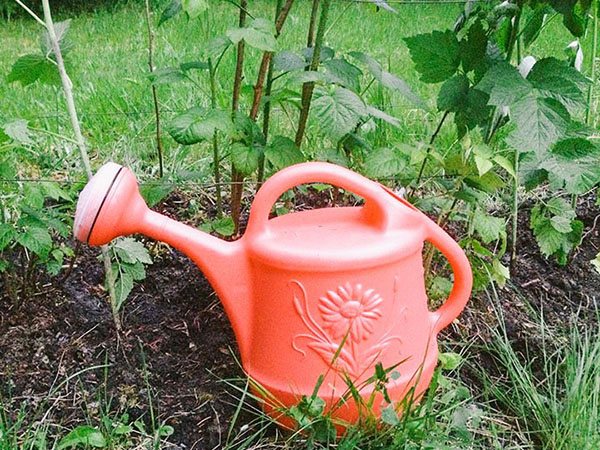

In order to collect the maximum number of berries each season, you must adhere to simple care rules. It is enough to observe watering, as well as to cut and feed the plants in a timely manner.
Irrigation of raspberries
Despite the fact that the plant is not whimsical, abundant watering is still necessary. Water raspberries frequently, especially on dry days. Pour up to 3 buckets of clean water under every three bushes.
Soil mulching
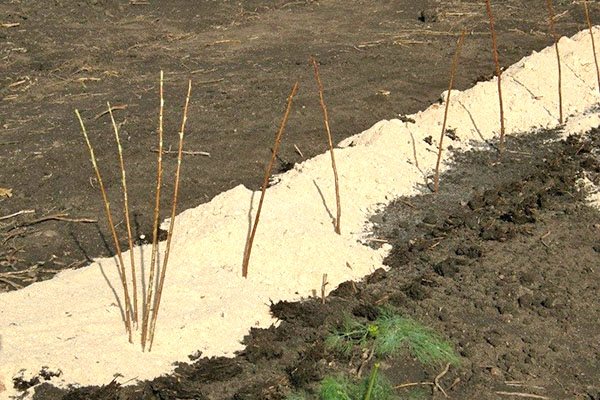

This is an important procedure on which the strength of the root system depends. By mulching the soil around the shoots, the plant receives all the necessary components and additional protection from overheating. To do this, use compost, straw. Manure is also a great option. Less commonly, a mixture of peat and humus is used for these purposes. The ball of mulch should be within 5 cm.
Feeding raspberries
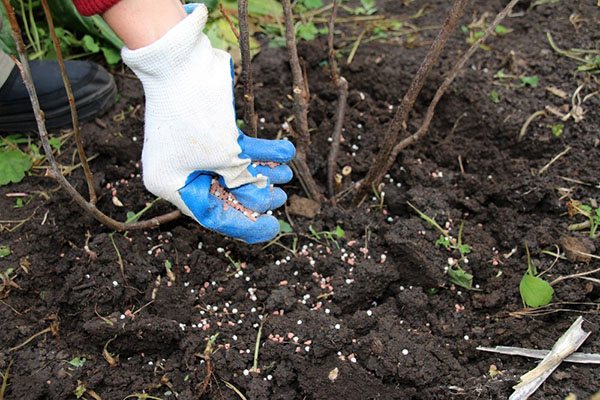

Plants should be fertilized with both mineral and organic mixtures. Wood ash is a good option. The bushes should be fertilized in the fall. This will help them to more easily endure frost and excess moisture during snow melting.
Pruning shoots
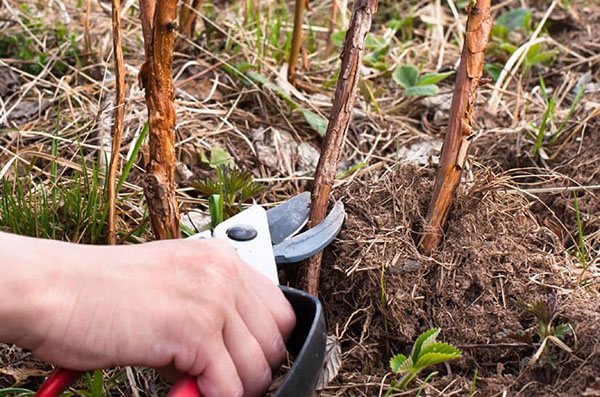

When caring for raspberries, you need to pay special attention to pruning them. In late autumn, remove all deformed, thin and those branches from which the berries were collected. Shoots that are no more than 1 year old need to remove 35 cm of the top.
Also, the revision of the branches is carried out in early spring, after the snow has melted and the earth has dried well. In each bush, 5 to 7 healthy branches are left, and all the rest are cut off near the base.
Since the Gusar variety is distinguished by its rapid growth, pruning of some shoots will need to be carried out throughout the summer. Those branches whose height has reached 1.5 m are shortened by 30 cm.If this is not done, then it will be very difficult to get good fruits from them.
Preparing raspberry hussar for winter
In early autumn, while the branches are still flexible enough, prepare for winter. All bushes retainers are removed, and the shoots are neatly folded onto the ground surface. The root part is covered with a thick layer of straw or sawdust. From above, everything is abundantly wrapped in special material. They remove the shelter in the spring as soon as the snow melts.
Care and feeding
It is believed that both organic and complex mineral fertilizers are suitable for feeding raspberries. Plants respond well to wood ash.
Recommendations for growing the "Gusar" variety:
- high quality soil;
- lack of drafts;
- regular watering;
- top dressing;
- pruning.
Given the overall dimensions of the plant, it is necessary to provide enough space for the raspberry tree so that the bushes fully develop and bear fruit.
Bushes that have reached a height of 2 meters or more are recommended to be tied up. This agronomic technique will save the branches from mechanical damage in the event of a bountiful harvest. In regions with harsh climatic conditions, raspberries are also additionally insulated. Covering non-woven material is used, drifts are scooped up.
Top dressing is carried out several times during the growing season:
- Raspberries are fertilized for the first time in May. A mullein solution is used at the rate of: 10 liters of water per 0.5 liters of manure.
- In early summer, additional feeding helps to stimulate fruiting. Apply bird droppings effectively. It is diluted in water in a ratio of 1:10.
- During the formation of berries, specialized means are used. Use nitrophosphate and Ideal. 30 g of preparations are diluted in 10 l of water.
- After fruiting, the shrubs are fed with potassium sulfate. Add 30 g of fertilizer to 10 liters of water.
Top dressing is carried out after rain or on a pre-moistened soil to avoid scalding the root system.
Raspberry garter methods
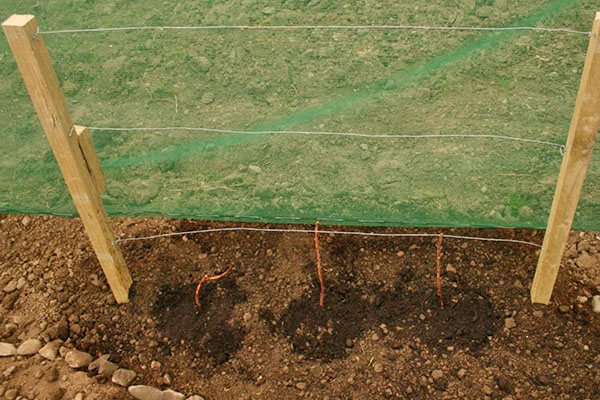

Since the Gusar variety grows to an impressive size, the bushes must be tied up. If this is not done, then the shoots may break.
The shoot garter affects the quality and size of the fruit.
Ways to tie raspberry bushes:
- Fan-shaped. The most common method used by a large number of gardeners. For this, supports are used, which are installed to the left and right of the shoots. They need to be placed at a distance of 5 to 10 cm from each other.
- Tapestry. In this case, the supports are installed around the entire perimeter, and a mesh or strong threads are pulled between them. All shoots are fixed on them. Young twigs are tied to the first row. The number of threads increases with the growth of shoots and their number.
If done correctly, the raspberry bushes will take on a neat look, from which it will be easy to pick aromatic berries. Raspberries of the Gusar variety are a real decoration of the garden. Huge shoots and colorful fruits will delight all passers-by.
Summer raspberry varieties Gusar - video
Raspberry Gusar is a tall variety that is grown in all regions of Russia. It became widespread in the XII century and to this day it is especially popular among both experienced gardeners and beginners.
There are several varieties of this raspberry: black, red and yellow. All of them are frost-resistant and large-fruited. However, you can get a good harvest only by adhering to all the rules of agricultural technology.
General description of the variety
Raspberry Hussar belongs to tall, on average, the height of the bush can reach about 2.5 m. The shoots are strong and erect. The leaves are quite large. The plant grows normally without the use of special props. The bushes can withstand even very bountiful harvests and strong winds.
A distinctive feature is the arrangement of the spikes.They are found only on the lower part of the shoots, so it is convenient to collect such raspberries.
The plant tolerates frost and drought well, therefore, it can be grown both in the southern and northern regions of Russia. The bushes grow quite quickly. Root growth is practically absent. This can be explained by the fact that the root system consists of only 10 offspring. This feature makes it possible to grow a plant in one place for up to 25 years. However, in this case, reproduction by layering is excluded.
In the south, the first crop can be harvested at the beginning of July, and in the middle lane, the crop is harvested only in August. Fruits have a conical shape, bright ruby color. On average, one berry can weigh 3-4 g, if the care is chosen correctly, then the berries can reach 10 g.
Sweet and sour taste... Up to 6 kg of raspberries can be harvested from one bush. They can be used both for raw consumption and for making homemade preparations.
Benefits of the variety
The repairing raspberry variety Gusar is of a medium early ripening period, it is rightfully considered one of the best berry bushes.
What are its advantages:
- Unpretentiousness. No special knowledge is required to get a rich harvest. Even beginners can do it.
- The variety is fruitful. If you follow agrotechnical standards, up to 6 kg of fragrant berries can ripen on one bush. From a hundred, under favorable conditions, you can collect up to 120 kg.
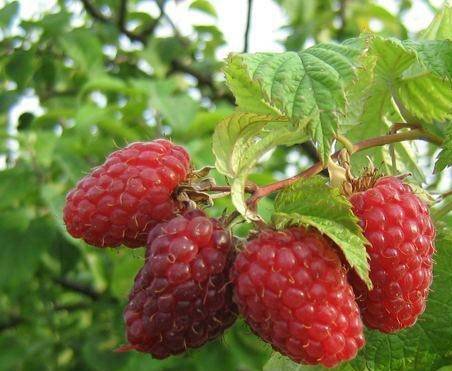

- Raspberry Gusar manages to achieve technical maturity in any region of Russia, even under adverse climatic conditions.
- A universal variety, suitable for making raspberry compotes, preserves, jams.
- Due to its excellent presentation and the ability to transport without any significant losses at any distance, this remontant variety is grown on an industrial scale.
Gusar berries differ in chemical composition:
- fructose and glucose not less than 10.9%;
- organic acids up to 1.8%;
- ascorbic acid about 27.4 mg /%.
Important! All these characteristics are an excellent recommendation for planting on the site of the Gusar remontant raspberry.
Main advantages and disadvantages
Raspberry Gusar is a “golden” variety. This is evidenced by a lot of advantages. The main ones include the following:
- The smell is pronounced, the taste is sweet.
- Versatility in use. Berries can be eaten raw or used for harvesting for the winter.
- The bushes tolerate drought well, so the plant will grow well in the southern regions without losing yield.
- Few thorns. Due to the fact that they are located in the lower part, the harvesting process is as comfortable as possible.
Despite the large number of advantages, this variety has its own disadvantages that you should be aware of. They are as follows:
- The berries are quite small and have a very short shelf life.
- A rather large area is required for disembarkation.
- The berries are soft, so transportation problems may occur.
- Despite the fact that the variety is frost-resistant, the root system must be protected from frost. Otherwise, the bush will die.
All of these disadvantages are pretty minor. Therefore, this variety still remains popular, since its taste plays a key role.
Harvesting and storage
Already in the last days of June you can harvest the first harvest of Gusar raspberries. For collection, choose dry, not rainy weather, preferably in the middle of the day when the dew has already dried. Otherwise, wet berries will spoil very quickly.
Ripe berries have a rich color - red. Darkening of the fruits indicates that they are overripe. This does not affect the taste in any way, but it will be difficult to transport such berries.
Separate the berries from the stalk very carefully: their juicy pulp is easy to damage. If you are planning to transport raspberries, it is best to cut off the stalk without touching the fruit. At the same time, try not to touch the berries.
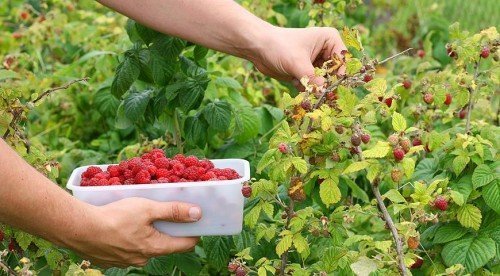

You need to pick berries carefully so that they do not crumple.
Collect the raspberries in dry, clean glass jars or baskets in which you will transport them. Immediately after picking, remove the berries in the shade, otherwise, under the influence of sunlight, they will begin to creep and sour. If you put them in the refrigerator at temperatures up to +5 ° C and a humidity of about 85%, the berries will remain fresh for 2–4 days. It is best to process them as quickly as possible into compote, jam, jam, or freeze. Raspberry Gusar ground with sugar (in a 1: 1 ratio) can be stored in the refrigerator for about a month.
Planting and grooming recommendations
You can get a good harvest only if you follow all the rules of agricultural technology. Despite the fact that the variety is rather unpretentious, there are some nuances. When choosing a planting site, it is best to choose areas that are well lit. The bushes will grow well in fertile soil. Therefore, gardeners often use various mineral and organic fertilizers to saturate the soil with them.
Every spring after the appearance of buds, you need to revise the bushes. All shoots should be inspected for lesions and missing buds. Affected shoots can be removed.
Pruning should be done after the buds begin to bloom.... Shoots should be shortened by 10-15 cm. Only the strongest shoots should be left on the shoot. Such a procedure is necessary so that the fruiting shoots receive the right amount of moisture and nutrients.
The second pruning is carried out in June, by this time the shoots should have reached 1.5 meters. This time, shorten to 1 m. The last pruning is carried out at the end of July, only the lateral shoots are shortened. Pruning is needed in order to increase yields, but also so that the plant overwinters normally.
Raspberries are quite demanding on moisture. This feature can be explained by the fact that in the wild, some varieties grow directly in water. Watering should be frequent and abundant, but the soil should not turn into a swamp. If the bush lacks moisture, this negatively affects the juiciness and size of the berries.
To keep the soil moist for as long as possible, experienced gardeners recommend mulching the soil. Wood ash is perfect for this purpose.
Characterization of breeding methods
There are several ways to propagate Gusar raspberries at home. It can be:
- cuttings;
- reproduction by seedlings.
Most gardeners prefer the first option. For this, offspring that do not yet have their roots are perfect.
Harvesting should be carried out when the offspring reach 3 cm in height and about three leaves are formed on them. After cutting the cuttings, they need to be carefully tied, and all slices must be processed with a growth stimulator. Prepared cuttings must be placed in a nutrient medium. To prepare it, you need peat, humus and earth. It is important that the substrate is constantly moist.
On average, the formation of the roots of the system takes about 2-3 weeks. After the roots appear, the cuttings can be planted in the main place where they will grow. For disembarkation, it is better to wait for cloudy weather. For the first few days, the plant needs to be shaded a little.
The second breeding technique involves the purchase of seedlings. You need to purchase them only from trusted suppliers who give a quality guarantee for their product. In the autumn, it is better to abandon planting cuttings, as they simply may not survive the winter.
The pioneer and founder of a number of raspberry varieties in Russia was a breeder from Bryansk, Ivan Vasilyevich Kozakov. Today, the disease-resistant varieties he bred are cultivated in many European countries. To obtain the Gusar variety, Kozakov pollinated Kenby's raspberries with varieties resistant to viral diseases.
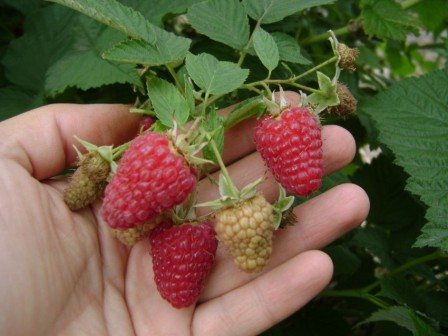

The selection result turned out to be better than its “parents” in many ways, and has been actively cultivated in many farms of the country since 1999.
A bit of history
Gardeners learned about the breeder Kazakov Ivan Vasilievich almost half a century ago. It was he who was one of the first to take up domestic remontant raspberries. In his collection there are many varieties, in many respects superior to other plants in large-fruited, resistance to raspberry diseases and pests.
The varieties of the collection are often called "Cossack". Repaired raspberries of this breeder are grown not only in the Russian open spaces. Gardeners of the former republics of the Soviet Union are also not averse to getting saplings of the popular raspberry.
Preference is given to many varieties, but most often they pay attention to remontant raspberries:
- Indian summer;
- Penguin;
- Runaway:
- Balm;
- Modest.
Video about Kazakov's varieties:
Repaired raspberry Gusar (the name alone is worth something!) Is the most in demand today. They began to cultivate Gusar in 1999. This is truly a "golden grade", distinguished by its unpretentiousness.
Kazakov managed to develop a variety that does not affect many raspberry diseases. He took the best Russian raspberries and the American Kenby variety as a basis. As a result of cross-pollination, I got the Gusar variety, the qualities of which are superior to those of the “parents”.
Characteristics of the variety
The garden raspberry Gusar gained rapid distribution due to its unpretentiousness. Even inexperienced gardeners with a small piece of land can grow a bountiful harvest.
- The plants are tall from 1.8 to 2.5 meters in height, the branches are powerful, strong.
- Thorns are mainly found at the base of the bush and in very small numbers. This feature facilitates the process of picking berries.
- Shoots and leaves are covered with a light waxy coating that protects against moisture loss. Drought tolerance allows this species to be cultivated in arid areas.
- Shoots are erect, slightly reddish at the bottom.
- Numerous root shoots are absent. This feature greatly simplifies breeding in small plots, and saves time and effort spent removing excess shoots.
- The leaves are dark, with moderately sharp teeth at the edges, wrinkled and slightly curled, with a slight downy.
Fruits are large (4 gr.) Slightly elongated with a blunt end, firmly adhere to the branches and do not crumble when removed. In the period of full maturity, they acquire a beautiful dark ruby color.
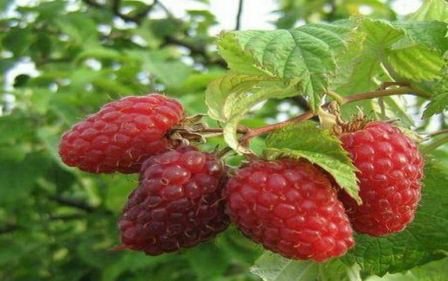

Description
Much about the Gusar raspberry can be learned from the description of the variety and reviews of amateur gardeners.
- The shrub grows up to 2, 7 meters. Shoots are brown, erect, spreading bush. Powerful shoots with a waxy bloom without pubescence in the second year do not need to be supported if their height is less than 180 cm.
- Many roots do not form on the root system. Therefore, a large amount of root growth is not formed, most often from 8 to 10.
- There are few thorns, they are mainly located on the hussar raspberry in the lower part. The spines are purple, rather sharp.
- The leaves are dark green with wavy edges. The wrinkled leaves are not twisted, do not go down.
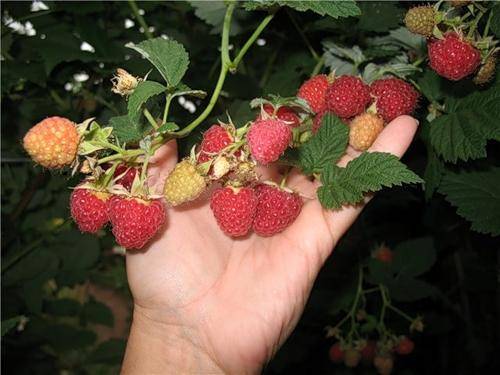

- Large berries of deep red color, dark ruby at the stage of full maturity. They stand out for their unusual shape: the berry is long, and the tip is dull. The weight of sweet and sour berries is up to 4 grams. The pulp is dense, the berries practically do not crumble.
- Not subject to decay. They are distinguished by aroma and unsurpassed taste.
A brief description of the variety in the photo.


Important! You can grow raspberries Gusar in any regions of Russia.
Superiority and distinction
A distinctive feature of the variety is its simplicity in agricultural technology and stable yield, even in difficult situations. But with proper care and appropriate natural conditions, more than 3 kg can be removed from each bush.
Hussar is one of the non-remontant varieties of the mid-early ripening period, the berries ripen together for a month, and gardeners manage to harvest the bulk of the harvest before the onset of cold weather in most of Russia.
Excellent appearance and consistently high yields, as well as unpretentious care, make it very tempting for breeding for sale on both farms and private households.
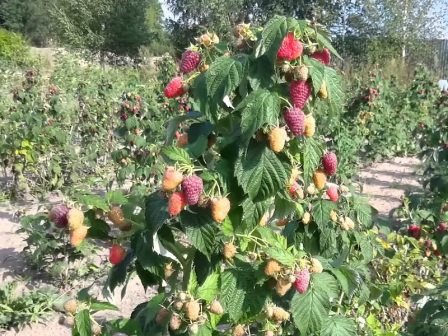

The berries are endowed with a very strong aroma and pleasant sweet taste with a slight acidity. The high content of sugars (7-10%) and vitamins (37%) makes the fruits very tasty when eaten fresh and for harvesting.
The greatest advantage of the Gusar raspberry variety is its resistance to all known diseases.
Disadvantages of the variety
Despite all the listed advantages, the Gusar variety has a number of disadvantages:
- Sprawling bushes occupy a large area. The gaps within the rows are 80-100 centimeters, and between the rows - 1-1.5 meters.
- The height is 2-2.5 meters, with such parameters you cannot do without setting the trellises, you need to tie the bush 2-3 times at regular intervals. Such a garter allows you to preserve the harvest on all parts of the plant.
- It perfectly tolerates the most severe frosts in the open field, but with sudden changes in temperature, the roots are subject to glaciation, which leads to the death of the entire plant. Young bushes planted in autumn are especially susceptible.
It should be noted right away that with a decent yield - about 84 centners per hectare, Gusar is still inferior to other, higher-yielding varieties, bringing from 100 to 120 centners / ha. There are also varieties that are much sweeter and with a larger berry size (10 grams).
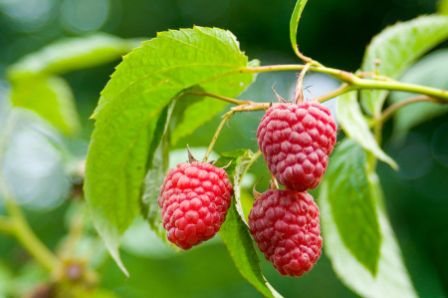

Planting and caring for raspberries
Perhaps the most important stage is the correct choice of seedlings, because the yield of the variety as a whole depends on their quality and species characteristics.
The choice of planting material
You can buy seedlings only in garden farms and shopping centers with a good reputation, otherwise you might not see the peculiarities characteristic of the variety.
When selling raspberries with bare roots, pay special attention to their length (at least 15 cm). The stem length should be 40-45 centimeters.
A seedling with large, green leaves will not be viable.
Do not buy raspberries without visible varietal traits.
Weak, thin shoots will hurt for a long time and most likely will not take root.
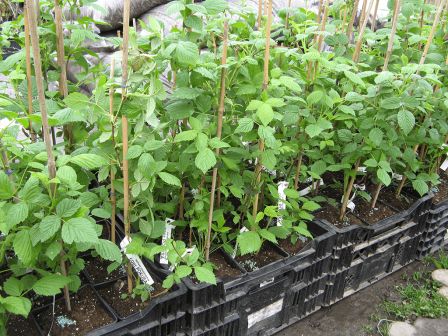

Planting technique and timing
It is better to plant raspberries of the Hussar species in the spring to avoid icing of the roots and to allow the plant to grow stronger by the onset of cold weather. Weed the area set aside for the raspberry tree and carefully dig it up, adding manure.
Planting holes must be prepared in the fall, their size is 50 by 50 cm and a depth of up to 55 cm. At the bottom, it is necessary to put humus and plant residues, on top of a layer of soil 30 cm. In winter, the prepared mixture will settle down a little.
With the arrival of heat, plant the raspberries in the prepared places, filling them with the nutrient mixture to the top.
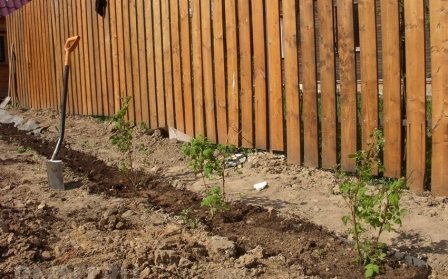

Bush care
For rapid growth and active fruiting, raspberries need:
- Constant watering.
- Timely feeding.
- Formative pruning.
- Protection against viral diseases and parasites.
For watering, it is better to take water that has stood for at least 12 hours in order to prevent temperature changes that are harmful to the health of the roots and the general condition of the bushes. One plant needs about 10 liters.
Watering must be done at the root, not irrigating the entire plant, so as not to provoke the development of diseases with excess moisture.
The first feeding is carried out when the first leaves appear. Only natural remedies are used - infusion of mullein or chicken afterbirth. You can fertilize with rotted manure, 1 bucket under a bush, but only when the soil is completely thawed.
During the flowering period, a second feeding is carried out: potash and phosphorus fertilizers are added to the organic infusion at the rate of 10 kg per 10 liters of the prepared infusion.
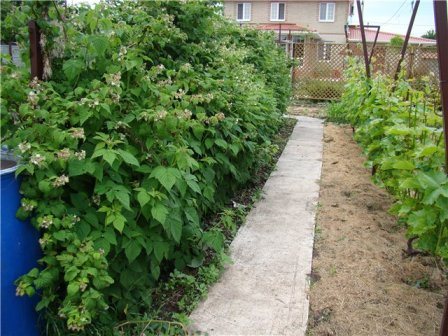

The same feeding is carried out in the fall.In the summer, the intervals between the rows are covered with ash - 0.5 liters per square meter.
Gardeners cut the repair varieties to the root in the fall, the tall Husar variety does not need this. A regular spring cleaning is enough to remove dry and non-viable specimens under the root. The main thing is to leave 5-6 shoots, so that a strong bush would form.
The first pruning is done in June, shortening all 1.5 meter shoots to 1 meter. The procedure is necessary for the transfer of nutrients to flowers and is carried out in order to increase yields. The second pruning is done in July. Only the lateral branches are shortened by 10-15 cm.
Reproduction
Raspberry needs regular rejuvenation. Each shoot develops for two years. At the first stage, it grows and gets stronger, and at the second, fruiting begins.
Raspberries reproduce in two ways.
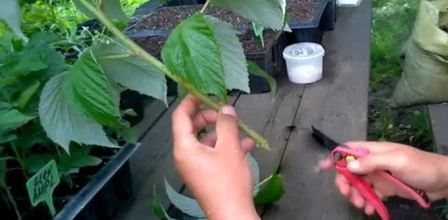

The second way is the easiest. In the second year of development, shoots appear en masse around the main stem. It must be carefully dug up and transplanted into a dish with a nutritious substrate. At the end of summer, land on a previously prepared site.
How to care?
It is required to properly care for the crop in order for it to bear fruit perfectly. It is necessary to provide for:
- watering;
- fertilization;
- pruning;
- garter.
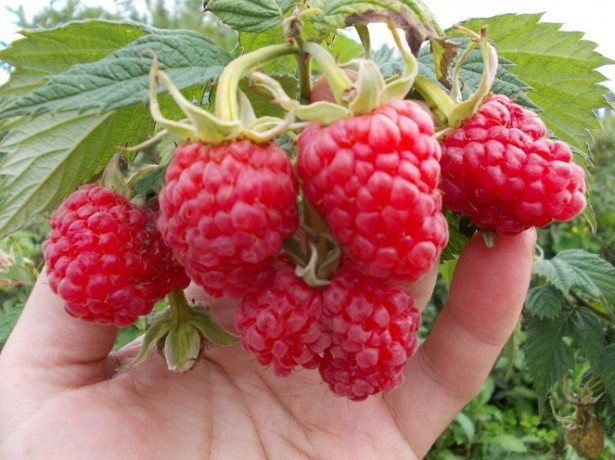

It is worth considering all this in more detail.
How to water and fertilize?
Raspberry Gusar does not like waterlogging. This needs to be taken into account.
Therefore, watering is recommended as follows:
- First, check that the soil is dry at a depth of about 5 cm.
- Then water is added with the calculation: 10 liters per bush or 50 liters per square meter.
- Then the soil is loosened and weeds are removed.
Important. To prevent water from spreading over the summer cottage, it is recommended to make small furrows about 15 cm deep.This will allow to collect excess moisture that was not immediately absorbed into the ground. In this case, the root system will still receive the necessary portion of water.
As for feeding, it is performed according to a certain scheme:
- Organic fertilizers are needed in the spring. They are best applied in liquid form. Horse or cow manure is used.
- During periods of active growth, flowering and berry setting, minerals are needed. They should be based on potassium, phosphorus, superphosphate, iron and manganese. Fertilizers can be purchased at specialized stores.
- Another top dressing is needed about 3 weeks before the onset of cold weather. Organic fertilizers are used in solid form.
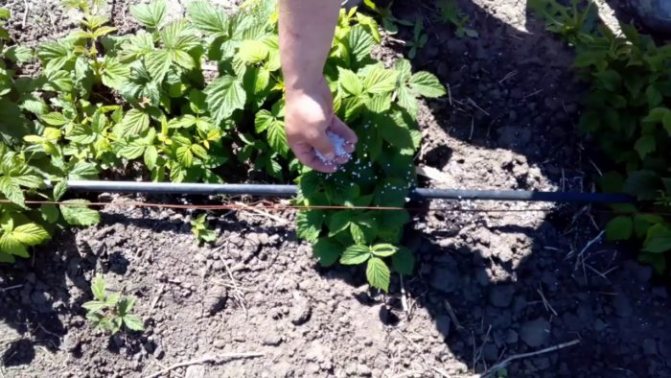

When using organic matter in solid form, you need to make sure that it does not come into contact with the root system, otherwise they may get burned from the released ammonia. However, it is necessary to keep the plant warm in winter.
Pruning
When pruning, it is necessary to understand that thanks to the procedure, it is not only possible to rejuvenate the culture, but also to remove potentially dangerous branches where pathogens are located. Pruning is done in the spring, during the summer (thinning) and in the fall. Autumn is the main one.
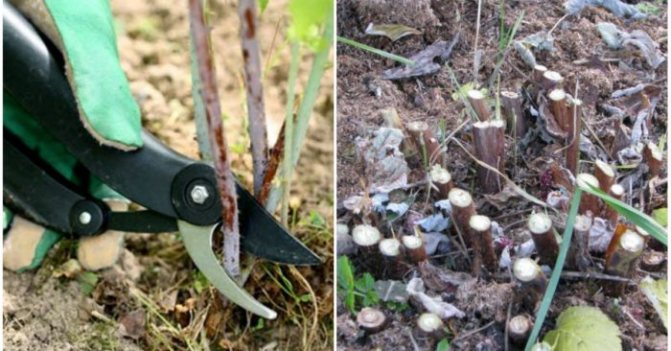

Here's what goes into pruning:
- remove diseased shoots;
- cut off dry branches;
- in the fall, the skeletal branches should be cut so that they reach about one meter.
It is worth noting that all cut branches must be burned immediately, as they may contain dangerous pathogens. As a result, if it enters the compost pit, all fertilizers will be contaminated. Thus, other crops that do not have the same immunity as raspberry hussar may not survive infection.
Wintering
It is required to take a particularly responsible approach to the wintering period of raspberry Gusar. Here's what you need to do for this:
- Dig in the shoots.
- Remove weeds.
- Prune branches.
- Add organic fertilizers.
- Mulch the soil.
- Bend the shoots so that they are completely under the snow in winter.
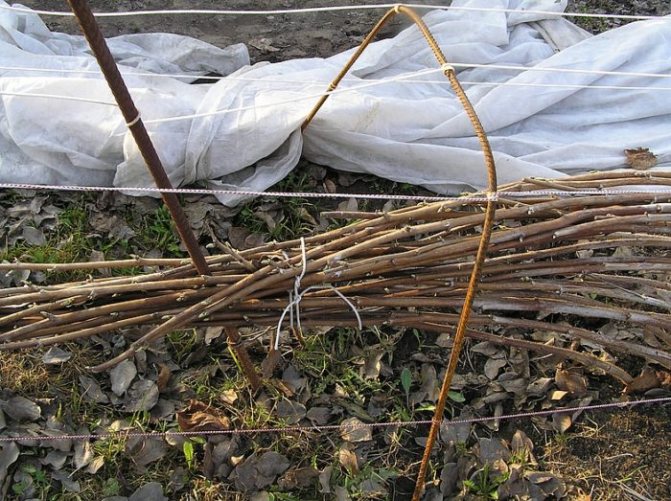

Important. There should be no leaves on the branches. If present, the plant will freeze with the onset of the first frost.
In the regions beyond the Urals, it is imperative to mulch the soil. In the European part of Russia, where winters are not very harsh, you can do without mulch.
Pests and diseases
This variety of raspberries tolerates most diseases. Moreover, they appear, as a rule, only as a result of improper watering.
Here's what you might encounter:
- different types of rot;
- anthracnose;
- rust on the leaves.
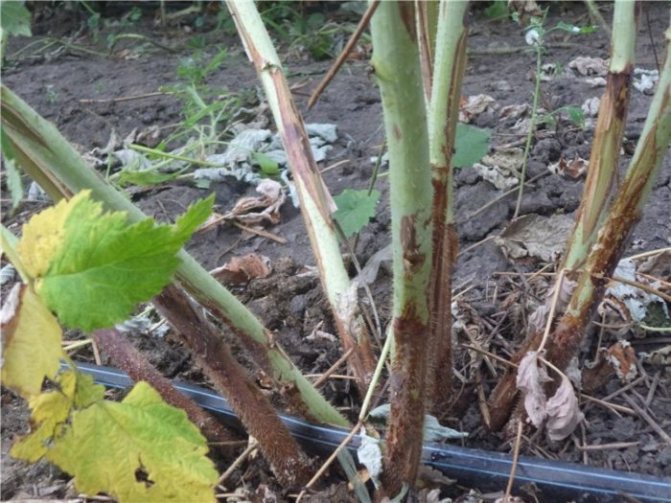

These are all treated by removing the affected area and spraying with fungicides. Also, sometimes raspberries are affected by pests. There are many folk methods from them, but their effectiveness is rather low. It takes a long time to apply them. To get the result quickly, it is recommended to purchase industrial poison in a specialized store. The first effect can be seen within 1-3 days, depending on the pest and the chemical used.
Parasites and methods of protection
Repair raspberries are also attacked by parasites and diseases. Every gardener should not forget to inspect the bushes in a timely manner, identifying and eliminating the problems that have arisen in order to maintain productivity.
Stem raspberry fly
Damages the tops with flowers and ovary, laying on them their gluttonous larvae.
- Detection and manual collection of larvae.
- Spraying plantings with Actellic fungicide.
The second option is effective for treating and preventing infection, but it is used only before the flowering of the plant.
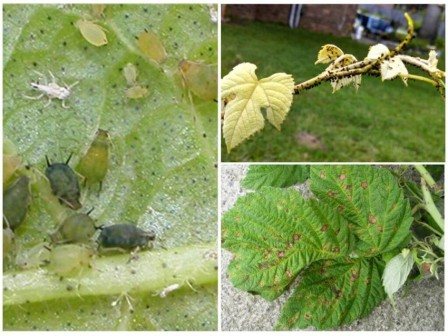

Raspberry gall midge (shoot gall midge)
The parasite lives in the surface layers of the soil, laying the larvae in warm weather. He makes moves under the bark of the raspberry, gradually moving up to the top. The first sign of a problem is cracked bark at the base of the bush.
It is not possible to kill the pest with known chemicals. The only method of control is to dig a bush with a large clod of soil and burn it to prevent infestation of neighboring plants.

